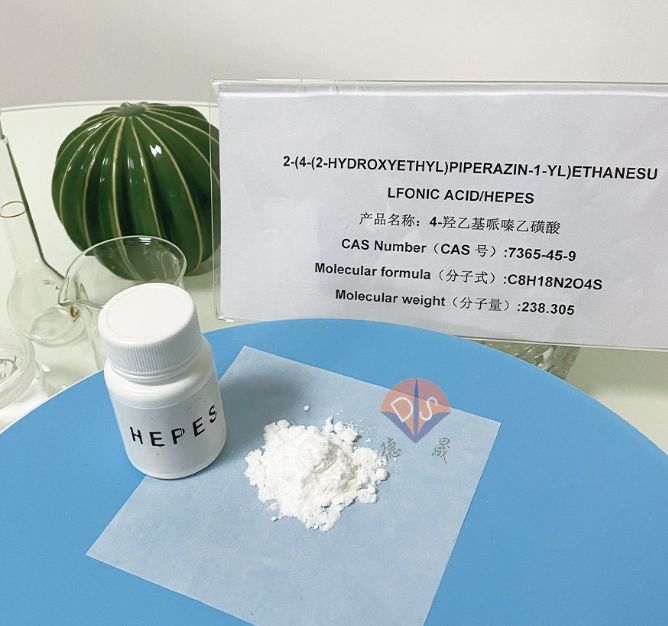HEPES: Key role from iron degradation detection to cell culture
Release time:
2025-05-28
HEPES (4-hydroxyethylpiperazine ethanesulfonic acid) plays a crucial role in modern scientific research and biotechnology applications. It is favored as a zwitterionic organic chemical buffer due to its excellent buffering capacity, non toxicity to cells, and ability to maintain stability over a wide pH range. This article will explore two main application scenarios of HEPES buffer- as one of the components for detecting iron degradation and its role in cell culture material particle transfection, and introduce a company dedicated to high-quality HEPES production.

HEPES powder
Application in Hank's solution: assisting in the detection of iron degradation
Iron is a key participant in many physiological processes within living organisms, but its excessive presence may lead to oxidative stress and cell damage. Therefore, accurately assessing the degradation of iron in the environment or biological system is crucial for understanding the mechanisms of related diseases. Related studies have shown that using Hank's solution containing HEPES in iron degradation detection experiments can make the detection results more reliable and stable. This is because a stable pH environment is conducive to maintaining the activity of enzymes involved in iron degradation reactions, ensuring that the reaction proceeds according to the normal pathway. Without the buffering effect of HEPES, even small changes in pH can lead to changes in enzyme activity, which in turn can alter the rate of iron degradation and cause experimental results to deviate.
Application in HEPES medium: promoting plasmid transfection of cell cultures
In addition to its application in chemical analysis, HEPES is also a frequent participant in cell biology experiments, especially during plasmid transfection in cell culture processes. Plasmid transfection refers to the process of introducing exogenous DNA into eukaryotic cells, and is one of the core technologies in fields such as gene function research and protein expression regulation. HEPES buffer is an ideal additive for cell culture media due to its proximity to physiological pH and low osmotic pressure characteristics. It can effectively maintain the pH balance of the intracellular and extracellular environment, reduce the influence of external factors on the cell state, and thus improve the efficiency of plasmid transfection. In addition, HEPES can provide a relatively mild operating environment that helps protect cells from mechanical damage and further enhance transfection success rates.
Desheng New Materials: HEPES Professional Supplier
With the development of science and technology, the demand for HEPES in the market is increasing day by day. Desheng New Materials is a professional supplier dedicated to providing high-performance and high-purity biological buffering agents. Since its establishment, Desheng has always been customer-oriented, focusing on product quality control and technological innovation. The company has an experienced R&D team that constantly explores and improves production processes to ensure that there are no differences in approval. Whether in the field of basic scientific research or industrial production, Desheng's products can meet customers' high standard requirements.

Product packaging
In summary, HEPES not only plays an important role in chemical analysis such as iron degradation detection, but also occupies a core position in life science research, especially in plasmid transfection of cell cultures. Whether you are at the forefront of scientific research or industrial development, you can trust the high-quality HEPES products provided by Desheng New Materials and work together towards a more brilliant tomorrow.
News
Contact details
Contact number
Address: C8, Guanggu United Science and Technology City, Ezhou City, Hubei Province
Fax:0711-3704 589
Follow us



